Cultural people of the year: From Scarlett Johansson to Taylor Swift to Rembrandt
As 2014 draws to a close, our specialists profile key figures who have made their mark in the arts
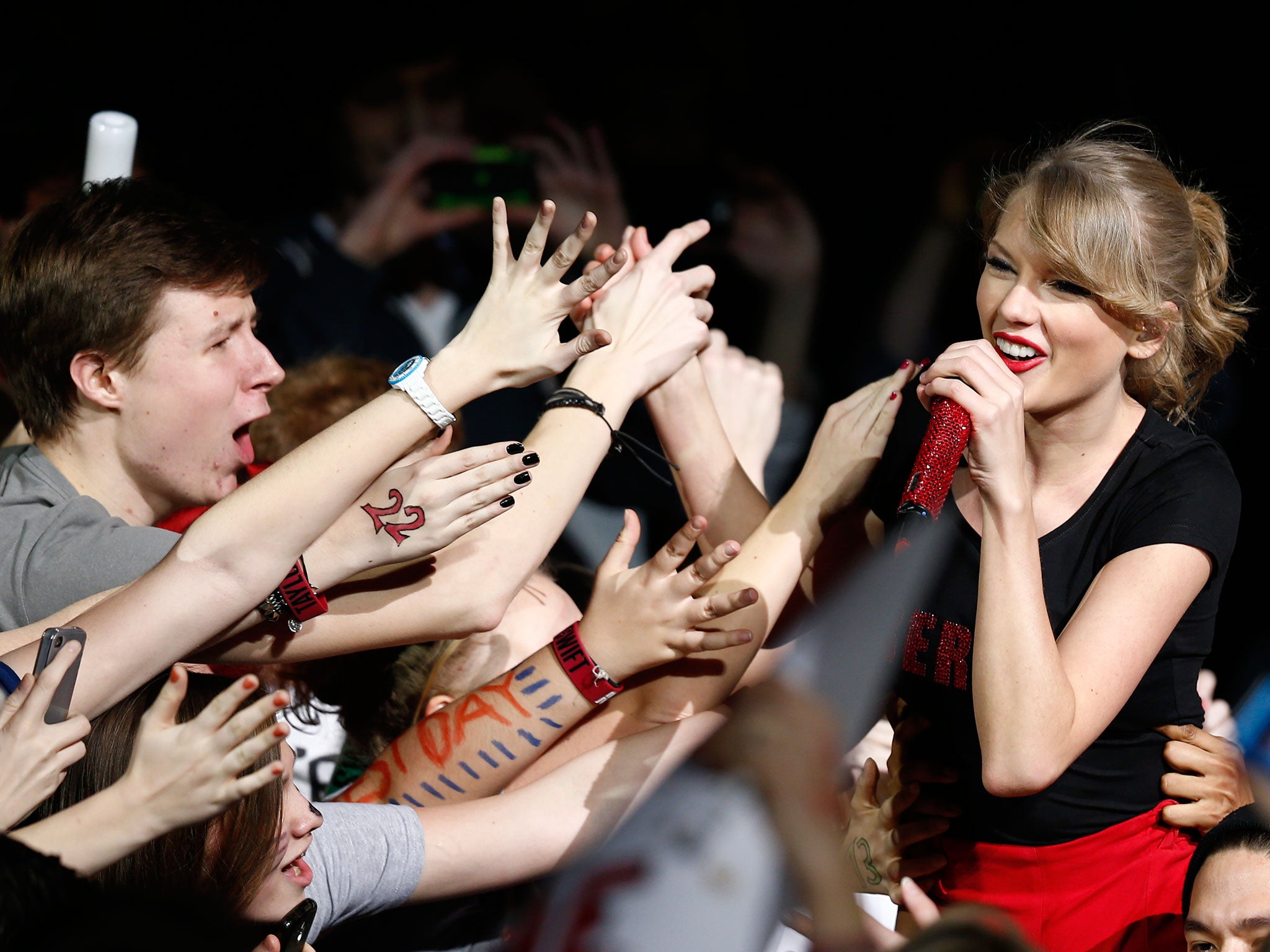
Your support helps us to tell the story
From reproductive rights to climate change to Big Tech, The Independent is on the ground when the story is developing. Whether it's investigating the financials of Elon Musk's pro-Trump PAC or producing our latest documentary, 'The A Word', which shines a light on the American women fighting for reproductive rights, we know how important it is to parse out the facts from the messaging.
At such a critical moment in US history, we need reporters on the ground. Your donation allows us to keep sending journalists to speak to both sides of the story.
The Independent is trusted by Americans across the entire political spectrum. And unlike many other quality news outlets, we choose not to lock Americans out of our reporting and analysis with paywalls. We believe quality journalism should be available to everyone, paid for by those who can afford it.
Your support makes all the difference.Film: Scarlett Johansson by Nicholas Barber
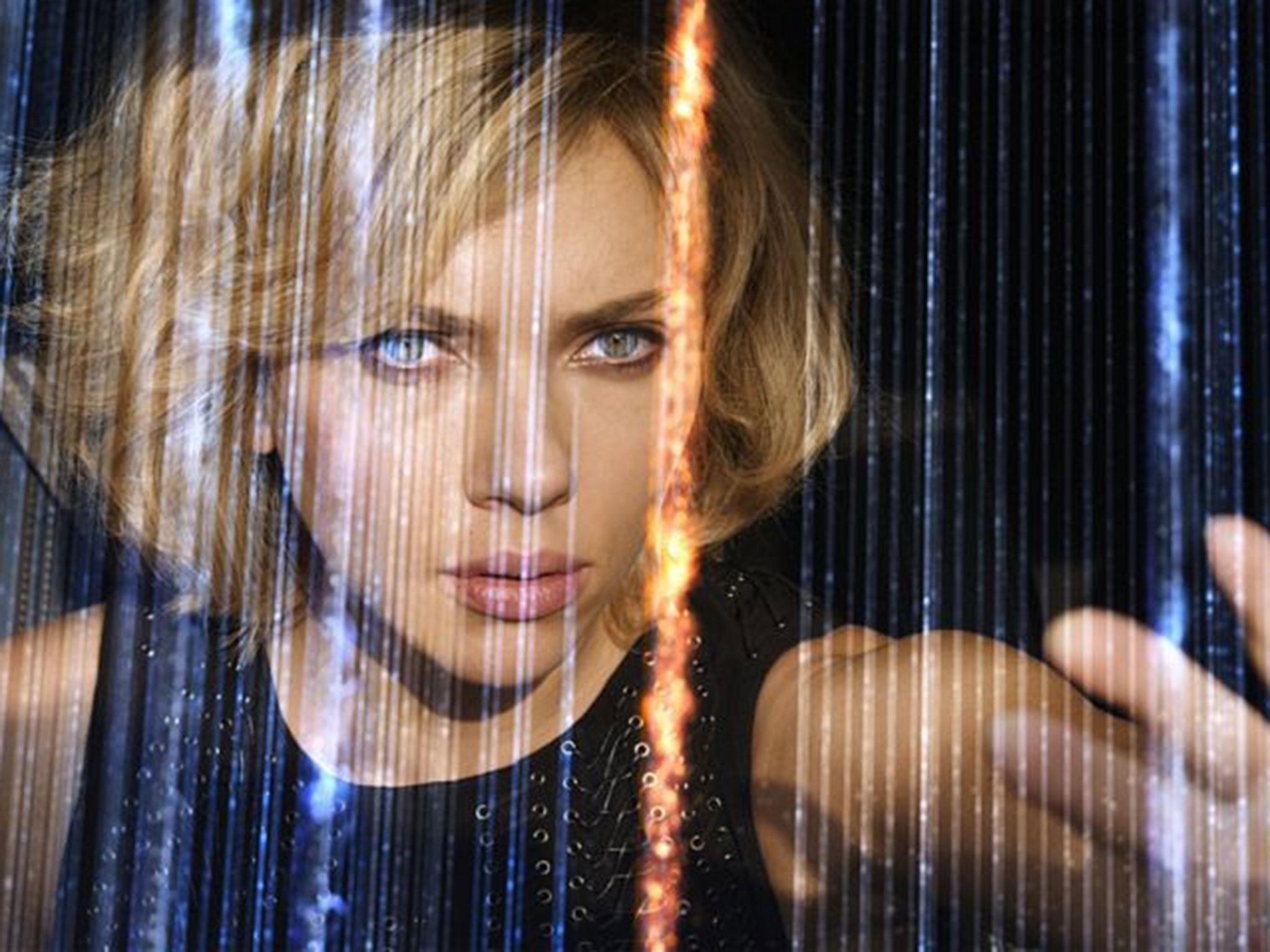
It’s been a red-letter year for Scarlett Johansson. She has worked steadily for two decades now, flitting between romcoms, period dramas and noirish mysteries, but in the past 13 months, she has had major roles in five films, including one mega-budget superhero blockbuster, Captain America: The Winter Soldier, and one mind-bending art-house sci-fi chiller, Jonathan Glazer’s Under the Skin. It was this last that established her as an exceptional actress, and not just a smoky voice and an hourglass figure.
Her character was an eerily emotionless alien predator who drove around Glasgow, looking for men to ensnare and consume. (In Captain America, she played The Black Widow. In Under the Skin, she was a black widow.) Glazer shot several sequences on location with hidden cameras, leaving Johansson to improvise in a flawless English accent while chatting up unsuspecting Glaswegians. Not many stars would have taken the risk. Fewer still would have pulled it off.
But another of Johansson’s films, Lucy, was even more significant. The received wisdom in Hollywood is that no one wants to see female-fronted action movies, especially if they’re not based on an established character – not that that helped Halle Berry’s Catwoman. But when Lucy opened in the US in July, Luc Besson’s psychedelic thriller about a drug mule who acquires superhuman powers trounced a Dwayne Johnson vehicle, Hercules, its closest competitor at that week’s box office. It went on to make nearly $500m around the world. The received wisdom was patently wrong. Johansson was as much of a draw as any male star.
Her ascent to the A-list has a lot to do with her down-to-earth appeal to men and women alike. But it’s also a sign of something more momentous. We’re now seeing a wave of megabucks films about strong women who aren’t merely the love interest, and who aren’t concerned, primarily, with finding the right husband and/or the right shoes.
To take some other examples, Sandra Bullock anchored Gravity last year, letting George Clooney spin off symbolically into Outer Space, while The Hunger Games and Divergent are both colossal franchises, and both depend on thoughtful young actresses who, like Johansson, are just as comfortable in offbeat dramas as they are in effects-packed dystopian fantasies. We still haven’t seen a big superhero movie with a female protagonist, but Wonder Woman and Captain Marvel are on the cards, and an all-women Ghostbusters film is planned. The times are definitely, refreshingly changing. When the day comes that Hollywood blockbusters revolve around women as a matter of course, we may remember 2014 as a key year, and we’ll certainly remember Johansson as a key player. Oh – and it was also this year that she turned 30 and had her first child.
Pop: Taylor Swift by Fiona Sturges
Add to that the fact that this seven-time Grammy winner shifted more than a million copies of 1989 within a week of release – accounting for one in every five record sales in the US – and Swift confirmed what we already suspected: she hadn’t just conquered the music industry, she was the music industry.
But then came an extra twist. In November she removed her entire back catalogue from Spotify in a bid to boost sales further. It was a massive blow to the streaming site where she had long been among their most popular artists. Suddenly Swift’s was the face that launched a thousand think pieces. Taylor, it was said, had redefined the entertainment industry, taken a sledgehammer to the notion of free music, and become “the standard bearer for assertive women in a deeply sexist business”.
Much has been made of Swift’s early reluctance to identify herself as a feminist in an era when the big question hanging over any female artist is not whether she’s any good, but whether she’s a paid-up member of the sisterhood. In the case of Swift, it was her friend, the writer Lena Dunham, who put the world straight. “She runs her own company, she’s creating music that connects to other women instead of creating a sexual persona for the male gaze, and no one is in control of her,” she said. “If that’s not feminism, what is?”
Enjoy unlimited access to 100 million ad-free songs and podcasts with Amazon Music
Sign up now for a 4 month free trial (3 months for non-Prime members)
Enjoy unlimited access to 100 million ad-free songs and podcasts with Amazon Music
Sign up now for a 4 month free trial (3 months for non-Prime members)
It’s doubtful that her tweenage fans care about her feminist principles, any more than they give a damn about her war on Spotify. It’s unlikely that they’ll be reading the Swift profile piece in this month’s Time Magazine. More alluring in their eyes is the prospect of a pop star with killer hooks, bold lyrics and a winning line in self-parody. For them the draw of Taylor Swift is simple: the girl’s got tunes.
TV: Jill Soloway by Hugh Montgomery

This year, more than any, television commissioners adhered to Henry Ford’s apocryphal dictum: “You can have any colour as long as it’s black.” Which is to say most of the best new shows were intent on submerging us in darkness. On these shores, the nation was gripped by a succession of scintillating, abandon-all-hope thrillers (Happy Valley, Line of Duty, The Honourable Woman and The Missing), while the most hyped debut show in the US, HBO’s True Detective, was almost self-parodic in its baroque grisliness.
Amid the gloom, however, one new series shone brilliantly: Jill Soloway’s Transparent, a queer, feminist family drama set in LA that focused on sex rather than death, and eschewed violence for compassion. The first major success story for Netflix rival Amazon Prime, its punning title flagged up its most talked-about element: the character of Maura, nee Mort, a gender-transitioning, 70-year-old professor. But the joy was not simply that it portrayed trans experience, but that it did so in such an a non-sensationalist, nuanced manner.
Indeed, Transparent was remarkable in its understatement: with the emphasis on mood and character rather than plot hooks, it rolled along with a soft, loose-limbed ease that stood out against the kind of macho, grandly stylised productions that have dominated US telly drama in recent years. And that ease was replicated behind the scenes. Unlike some showrunners, Soloway (left) engaged with criticism about her show: understanding the discussion around the casting of non-trans actor Jeffrey Tambor (above) as Maura, she established a “transfirmative action plan”, that favoured hiring trans people over non-trans people across the production. She has now hired a trans writer for Series 2.
Like Netflix’s Orange is the New Black before it, Transparent has been praised for portraying the types of characters rarely acknowledged on the small screen: and it seems no coincidence that both have appeared on new online platforms. The hope is that Soloway and Transparent may symbolise a new age of small-screen diversity, not only of voices, but tones and textures, set to flourish away from the traditional, advertiser-reliant networks. Now here’s looking forward to Netflix and Amazon commissioning in the UK.
Art: Rembrandt by Marcus Field
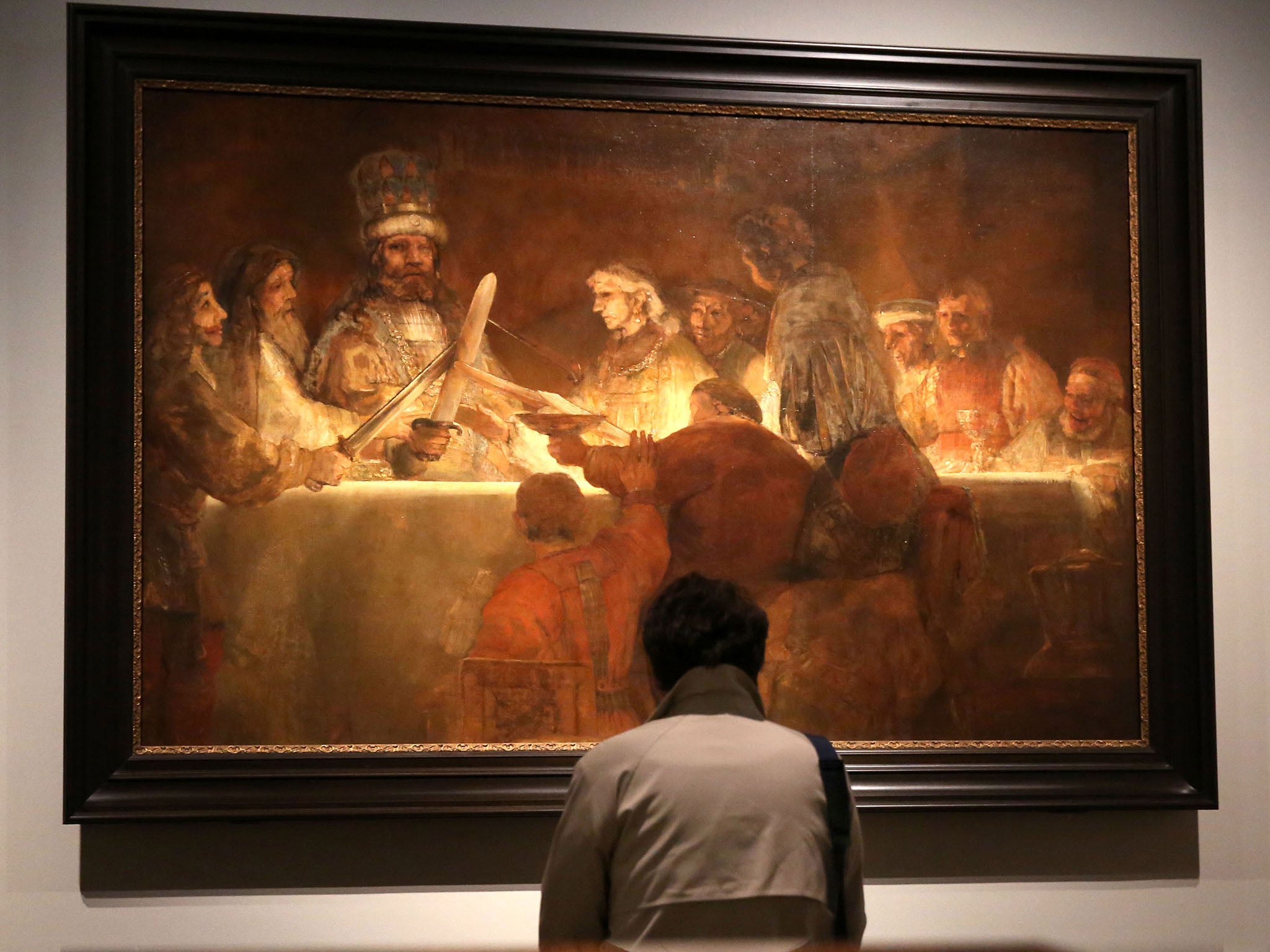
One day in 1664, Rembrandt set off from his home in Amsterdam to visit a scene that had aroused his interest. With him he carried a brush, a pen, a bottle of brown ink, and some paper. We know what he went to see, because three of his drawings from that day survive: what they show is a woman hanging from a gibbet, her body limp, her face fixed with rigor mortis. In these pictures we see the genius of Rembrandt; the Dutch painter whose every work brings us face to face with the reality of our existence. We live, we age, we die; the end might be peaceful, or it might be violent like this – but never does Rembrandt fight shy of the truth.
This year we were reminded of the artist’s remarkable powers by an exhibition of his late work at the National Gallery (continuing to 15 January). All the works in the show, including those mentioned above, were made after he was declared bankrupt in the 1650s. He had already suffered grief at the death of his wife, and now here he was, at 50, starting over again. But perhaps it was these painful experiences that added the humanity to the dashing bravura of his late pictures and turned them into something timeless.
Among the highlights of the exhibition is The Jewish Bride, a picture of exquisite tenderness in which a young man rests his hand on his wife’s breast. Then there are his uncompromising public commissions, including a brutal depiction of the one-eyed chieftain Claudius Civilis, a painting that was removed in disgust from the town hall in Amsterdam and returned to him. But rejection never knocked Rembrandt. He continued to face the truth, above all in his self-portraits – a set of pictures which constitute, arguably, the most profound meditation on ageing in all art history.
Some background details to this exhibition reveal how Rembrandt’s work has been valued in the past: Joshua Reynolds once owned his painting A Man in Armour; in 1885 Van Gogh wrote that he would gladly give up 10 years of his life to be able to sit in front of The Jewish Bride “for a fortnight with only a crust of dry bread to eat”; a drawing of the woman on the gibbet once belonged to the portrait painter Sir Thomas Lawrence.
But this year he has outshone not only living artists, but exhibitions by Turner and Constable, too. When it comes to wowing a crowd, this prince of old masters still takes the crown.
Theatre: David lan by Holly Williams
2014 started with Juliet Stevenson up to her neck in it in Samuel Beckett’s Happy Days. Her Winnie had light and shade, bright optimism and an undertow of despair; the show proved hugely popular, had an extended run, and returns in February.
Lan’s most talked-about programming came with productions that matched classic plays with radical, visionary directors who, notably, have international reputations and experience. Fearlessness characterised the approach of both Belgian director Ivo van Hove and Australian Benedict Andrews to two of the meatiest, but often over-revered, American classics. Van Hove’s stark take on Arthur Miller’s A View from the Bridge and Andrews’ revolving staging of Tennessee Williams’ A Streetcar Named Desire (above, right) both succeeded in stripping the plays of period cliché and stodgy deference, bringing them freshly, thrillingly to life. Both productions were aided, of course, by high-profile star turns: Mark Strong and Gillian Anderson are set to be conspicuous players in the coming awards season.
If the Katie Mitchell-directed The Cherry Orchard, in a new, pacy translation by Simon Stephens, wasn’t quite so revelatory, it had its fans. As did The Valley of Astonishment, Peter Brook and Marie-Hélène Estienne’s spirited exploration of neurological research. Finally Golem, 1927’s eagerly awaited follow-up to the international hit The Animals and Children Took to the Streets, is filling the Christmas slot – and with five-star reviews flooding in, it’s a crowning end to the year.
What’s so impressive about Lan’s reign is the way he has married maverick theatre-making with commercial nous: early next year, A View from the Bridge (top left) heads to the West End, while a 2013 Young Vic show, The Scottsboro Boys (bottom left) opened there to rave reviews and has just had its run extended. The latter was any-thing but a dead cert: it was a tricky musical about the harrowing case of nine young black boys falsely tried for rape, that lasted only three months on Broadway. But the Young Vic proved it could work.
2014 has been a brilliant year for intelligent plays and musicals transferring to commercial theatreland – think of Let the Right One In, Wolf Hall, King Charles III, 1984, Handbagged, Urinetown … and the Young Vic has contributed to that. Lan is a standard-bearer for the notion that producing great work whets the public appetite for ambitious, powerful theatre.
Classical: Sophie Bevan by Claudia Pritchard
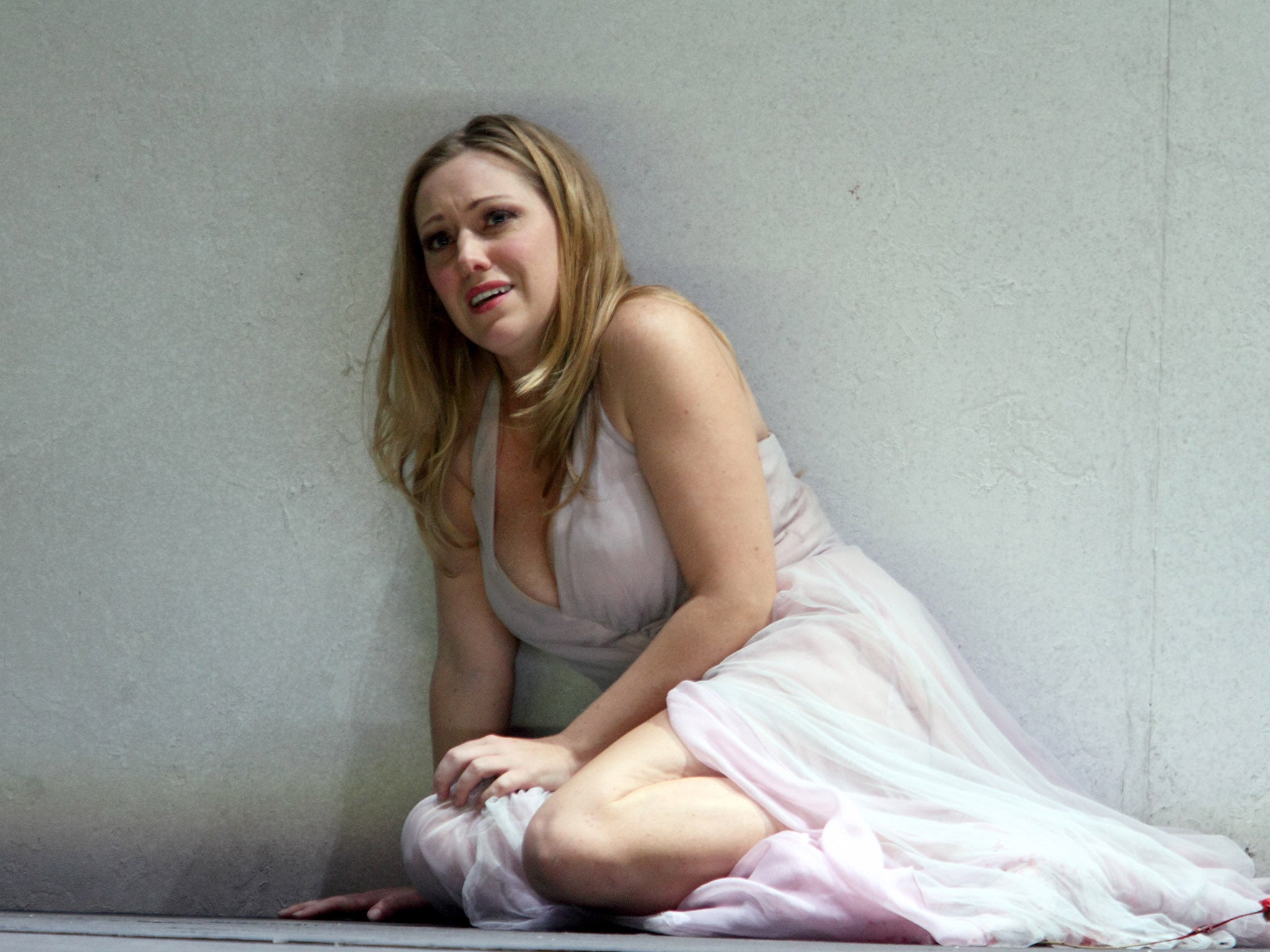
When soprano Sophie Bevan is on the bill, your heart leaps and you settle in for a performance of guaranteed professionalism. That’s even when landed with directorial idiocies, as she was by the toxic Martin Kusej when playing Ilia in the Royal Opera House’s Idomeneo this autumn. Opening both halves of the early Mozart opera, she set about her long and nuanced arias with aplomb, while showing herself off as an artist who moves as well as she sings; she knows how to pace herself, both in her big numbers and in her career.
Her current European tour of Messiah with the OAE tops off a singing year that opened auspiciously with her heartbreaking Iphis in Handel’s Jephtha at the Barbican with The Sixteen, under Harry Christophers, and its superb recording for Presto Classical. One-off performances included Berlioz’s Nuits d’été at The Sage, Gateshead, and a concert performance of Der Rosenkavalier in Birmingham playing Sophie, a role she first took at English National Opera. She did wonders for the reputation of British singing as her operatic year continued with Ninetta in La gazza ladra for Oper Frankfurt, and she returned to ENO to sing Leila in The Pearl Fishers, a summer pleasantry in the spectacularly successful year of the company that first nurtured her talents as a Harewood artist.
A favourite, too, at Welsh National Opera, she starts her new year there as Pamina in The Magic Flute, and the eyes of the world will be on her from June when she sings Michal in a staged production of Handel’s oratorio Saul. Glyndebourne (above, top) has a good track record for reinvigorating Handel, and even the damning description of director Barrie Kosky as “brilliant and provocative” (the sort of thing that is said about the vile Kusej) cannot dim the prospect of seeing Bevan making her Glyndebourne debut. She also returns to Covent Garden next year, and makes her debut at the Teatro Real, Madrid.
An impressive schedule, in short, for one of a whole family of singers – sister Mary is also supremely talented, baritone brother Ben is on the circuit, and there are other Bevans – who was booked by Ian Page’s company Classical Opera upon graduating from the Royal College of Music. Sophie won the Young Singer award at the first International Opera Awards only last year, and she shines in the classical repertoire. Page has a reputation as a good picker: with Sophie Bevan, he has got it right again.
Dance: Christopher Wheeldon by Jenny Gilbert
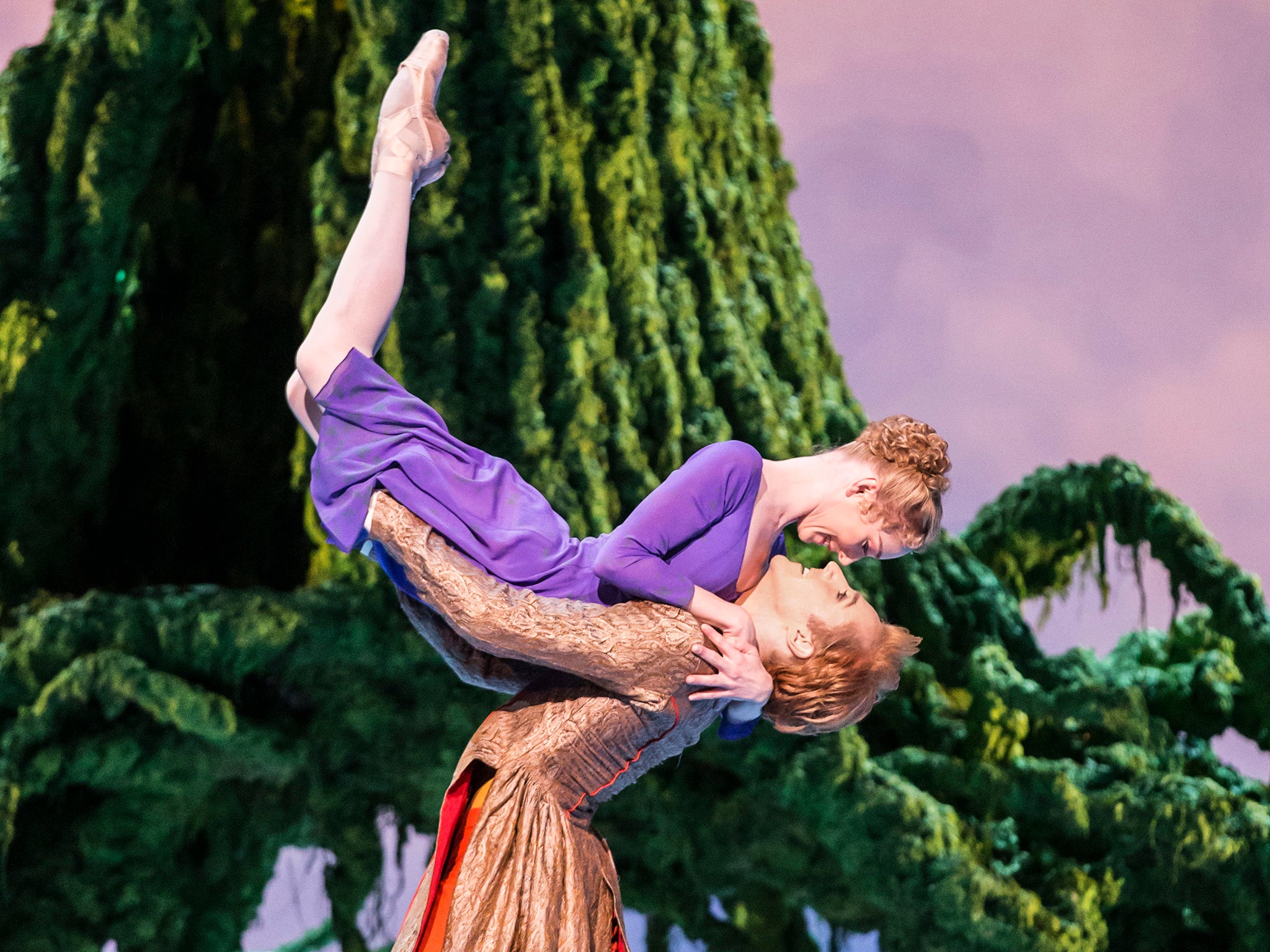
Being a self-effacing Englishman and thoroughly good sort, Chris Wheeldon might beg to differ, but almost every year since the Millennium has been a good one for this most lauded of ballet choreographers, now 41. He himself might wish to draw a veil over his 2007 commission from the Bolshoi – the Hamlet ballet that was not to be – and equally the three-year headache, that ended in 2010, of running his own transatlantic ballet company. But these register as mere hiccups on a trajectory that, in 2014, could hardly have taken him higher.
Not since the heyday of Frederick Ashton has one choreographer so dominated the Covent Garden stage. November saw a revival of Wheeldon’s anti-war piece Aeternum, set to music Benjamin Britten had written in response to the start of the Second World War. With barely time to draw breath, the Royal Ballet then let loose another Wheeldon revival, bumping The Nutcracker off its traditional end-of-year spot with Alice’s Adventures in Wonderland. First seen in 2011, Alice had proved a massive box-office hit for its kaleidoscope of vivid ideas, including a tap-dancing Mad Hatter, a 24-legged caterpillar and an unforgettable parody of The Sleeping Beauty’s “Rose Adage”, the greedy Queen grabbing a jam tart from each of her three cavaliers, scoffing them as she goes.
With Alice, Wheeldon cracked a perennial conundrum: how to bring in new audiences to ballet. And not just by way of pricey Opera House tickets, but in cinemas, too. On 16 December Alice was beamed to more than 400 screens in the UK, 1,500 worldwide.
But that’s kids’ stuff compared with The Winter’s Tale, Wheeldon’s dance adaptation of Shakespeare’s “problem play”, half Othello-like tragedy, half rom-com, premiered by the Royal Ballet in March. We no longer need persuading that Wheeldon can put on a good show; he’s clearly a natural collaborator, attracting star designers and composers. But with the dramatic challenges of Tale – what does jealousy look like in movement? – his work found a new gravitas. Aided by career-best performances by Ed Watson as the paranoid Laertes, and Lauren Cuthbertson as his bewildered queen, Wheeldon found his narrative voice. He had been a good choreographer since Polyphonia in 2001. He now looked set to be remembered as a great one.
And that’s not all … just scraping in during mid-December came Wheeldon’s first foray into the musical – the first ever stage adaptation, no less, of An American in Paris, the 1951 film, which he has directed as well as choreographed. It opened at the Chatelet Theatre in Paris to ecstatic reviews, and moves to Broadway in March. As yet, no London run has been announced. Some of us may not be able to wait.
‘The Winter’s Tale’ will be shown on Christmas Day at 7pm on BBC4
Join our commenting forum
Join thought-provoking conversations, follow other Independent readers and see their replies
Comments